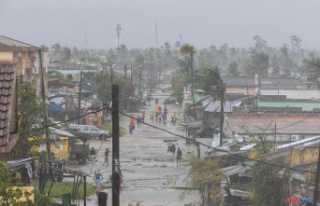Another "massive" stranding of cetaceans. Since Saturday March 11, dozens of dolphin carcasses have been found on the beaches of the French Atlantic coast. According to environmental protection associations, the strong westerly wind which pushed the carcasses towards the coast and the "very strong fishing pressure" would be to blame. On the beaches of the island of Ré, in Charente-Maritime, at least fifteen cetaceans have been stranded in the last three days, said Monday Dominique Chevillon, the president of the association Ré Nature Environnement and vice -president of the League for the Protection of Birds (LPO).
Citing information from members of the LPO, which regularly alerts to the multiplication of strandings this year, Mr. Chevillon estimates that "about 200" the number of specimens found in recent hours on the beaches of the Bay of Biscay. The Pelagis observatory, which has been recording cetacean strandings on the Atlantic coast since 1970, recognizes the extent of the phenomenon but without having "precise figures". “With the wind this weekend, a lot of strandings were observed. Our researchers are in the field now, evacuating and documenting them,” a Pelagis spokeswoman said.
Massive peak over the Bay of Biscay
Some 400 small cetaceans had already been found stranded on Atlantic coasts from December 1 to February 15, according to Pelagis. Most (90%) were common dolphins, a protected species, and a "vast majority" showed "traces of capture in fishing gear". "It confirms the massive peak over the Bay of Biscay," Judge Dominique Chevillon. "The broken teeth on this rostrum is undoubtedly a human-made injury," said Jean-Roch Meslin, correspondent for the National Network Strandings on the Ile de Ré, while examining a stranded female. Some carcasses had gaping wounds or fin marks.
The majority of strandings usually occur in February and March, when dolphins approach the coast to find their food and therefore have the most interaction with fishermen, according to these associations. Faced with NGOs and scientists who are calling for a temporary interruption of fishing, the government has so far favored measures to document the phenomenon and technical solutions, such as on-board cameras or repellents on boats.












